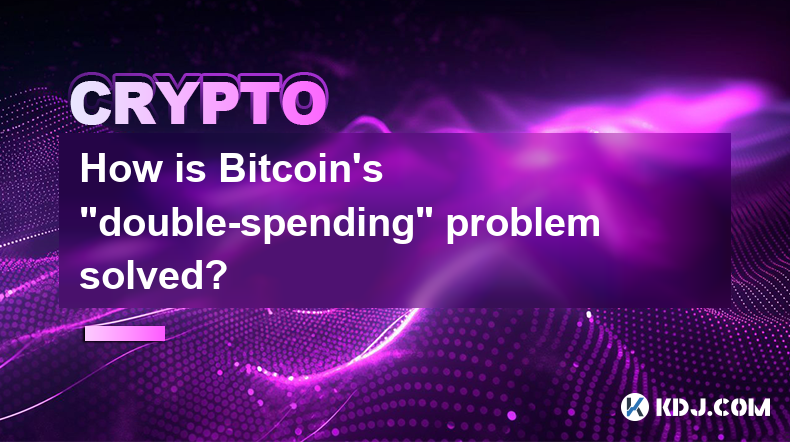-
 Bitcoin
Bitcoin $94,002.5095
-1.80% -
 Ethereum
Ethereum $2,638.6860
-6.01% -
 Tether USDt
Tether USDt $0.9998
-0.02% -
 XRP
XRP $2.3708
-7.73% -
 BNB
BNB $631.0791
-3.54% -
 Solana
Solana $150.1647
-10.57% -
 USDC
USDC $0.9999
0.00% -
 Dogecoin
Dogecoin $0.2204
-8.99% -
 Cardano
Cardano $0.7171
-6.67% -
 TRON
TRON $0.2473
0.83% -
 Chainlink
Chainlink $16.0162
-8.83% -
 Stellar
Stellar $0.3113
-6.17% -
 Avalanche
Avalanche $22.9757
-7.05% -
 Sui
Sui $2.9882
-10.34% -
 Litecoin
Litecoin $120.0327
-6.25% -
 Toncoin
Toncoin $3.5554
-5.64% -
 Hedera
Hedera $0.2066
-1.31% -
 Shiba Inu
Shiba Inu $0.0...01416
-8.25% -
 UNUS SED LEO
UNUS SED LEO $8.9386
-8.45% -
 MANTRA
MANTRA $8.0681
-4.94% -
 Polkadot
Polkadot $4.6158
-6.31% -
 Hyperliquid
Hyperliquid $20.3828
-12.56% -
 Bitcoin Cash
Bitcoin Cash $305.2557
-6.13% -
 Ethena USDe
Ethena USDe $1.0002
-0.01% -
 Bitget Token
Bitget Token $4.8123
-3.83% -
 Dai
Dai $0.9999
-0.01% -
 Uniswap
Uniswap $8.3026
-7.58% -
 Monero
Monero $232.7966
-0.96% -
 NEAR Protocol
NEAR Protocol $3.2152
-6.60% -
 Pepe
Pepe $0.0...08397
-9.78%
How to stake StaFi (FIS) coins?
Staking StaFi (FIS) coins involves selecting a dedicated wallet, picking a suitable validator, and transferring FIS to their address for rewards proportional to the stake duration.
Jan 08, 2025 at 02:08 pm

Key Points:
- Staking StaFi (FIS) coins involves using a dedicated wallet, choosing a validator, and transferring FIS tokens to the validator's address.
- Staking offers rewards proportional to the amount of FIS staked and the staking duration.
- Withdrawing staked FIS requires an unstaking period before the tokens can be accessed.
- StaFi offers high rewards for staking, but it's important to carefully consider the risks involved.
Step-by-Step Guide to Staking StaFi (FIS) Coins:
1. Choose a Staking Wallet:
- Use StaFi's official wallet or a reputable third-party wallet that supports FIS staking.
- Ensure the wallet is up-to-date and secure.
2. Select a Validator:
- Research different validators considering their fees, reputation, and voting power.
- StaFi's website provides a list of active validators, along with their staking addresses and performance metrics.
3. Transfer FIS Coins:
- Transfer the desired amount of FIS from your wallet to the chosen validator's address.
- Note: The minimum staking amount may vary depending on the validator.
4. Stake Your FIS Coins:
- Use the staking section in your wallet to initiate the staking transaction.
- Specify the validator's address, the amount of FIS to stake, and the lock-in period.
- Some validators offer additional rewards for longer lock-in periods.
5. Start Earning Rewards:
- Once the staking transaction is confirmed, your FIS will begin accumulating rewards.
- Rewards are distributed automatically to your staking wallet.
6. Withdraw Staked FIS Coins:
- When you wish to withdraw your staked FIS, navigate to the staking section in your wallet.
- Select the validator and enter the amount of FIS to unstake.
- Note: There is typically an unstaking period before you can access the withdrawn FIS.
Risks of Staking StaFi (FIS) Coins:
- Impermanent loss due to price volatility of FIS.
- Lock-in period limits your ability to access staked FIS for a predefined period.
- Loss or theft of staked FIS due to wallet security issues.
FAQs:
Q: What is the minimum lock-in period for FIS staking?
A: The minimum lock-in period varies by validator, but typically ranges from 7 to 28 days.
Q: What are the potential rewards for staking FIS?
A: Rewards vary depending on the validator, staking amount, and lock-in period, but can range from 5% to 20% annually.
Q: Can I add more FIS to my stake after it has been locked in?
A: Yes, you can add more FIS to your stake at any time during the lock-in period.
Q: What happens to my FIS if the chosen validator misbehaves or falls offline?
A: Your FIS will typically be safe, but your rewards may be affected. It's important to choose a reputable validator for staking.
Disclaimer:info@kdj.com
The information provided is not trading advice. kdj.com does not assume any responsibility for any investments made based on the information provided in this article. Cryptocurrencies are highly volatile and it is highly recommended that you invest with caution after thorough research!
If you believe that the content used on this website infringes your copyright, please contact us immediately (info@kdj.com) and we will delete it promptly.
- We Asked AI to Predict PI Coin Price if Bitcoin Crashes to $80k
- 2025-02-25 05:40:28
- Michael Saylor Presents Strategic Bitcoin Reserve Plan to the SEC's Crypto Task Force
- 2025-02-25 05:40:28
- South Dakota House panel kills bill that would have allowed state to invest in Bitcoin
- 2025-02-25 05:40:28
- Ethereum and Dogecoin Whales Move Quietly to FloppyPepe (FPPE) AI Token Linked to Meme Culture
- 2025-02-25 05:30:29
- 2025's Top Performing Cryptos– Mantra (OM), Litecoin (LTC), Cardano (ADA), and Web3Bay (3BAY)
- 2025-02-25 05:30:29
- Raydium (RAY) Alternative Crypto Gems Poised for Explosive Growth
- 2025-02-25 05:30:28
Related knowledge

What are the long-term investment risks of Bitcoin?
Feb 22,2025 at 05:30pm
Key PointsVolatility and price fluctuationsRegulatory uncertaintySecurity risksCompetition from altcoinsMarket manipulation and scamsTransaction feesEnvironmental concernsLong-Term Investment Risks of BitcoinVolatility and Price FluctuationsBitcoin's high volatility is a double-edged sword. While it has the potential to generate substantial returns, it ...

What are the main contents of Bitcoin's "white paper"?
Feb 21,2025 at 04:36am
Key Points:Understanding Bitcoin's Genesis: The White Paper's IntroductionA Decentralized Digital Currency: Bitcoin's Core ConceptBlockchain Technology: The Foundation of Bitcoin's Immutable LedgerProof-of-Work: Securing Bitcoin's NetworkThe Design of Bitcoin's Currency: Issuance, Scarcity, and DivisibilityBitcoin's Potential Applications and Future Pro...

How does Bitcoin's distributed ledger ensure consistency?
Feb 22,2025 at 10:06pm
Key Points:Bitcoin employs a distributed ledger, also known as a blockchain, to maintain a tamper-proof and consistent record of transactions.The blockchain is a decentralized network of computers that collectively validate and store transaction data.Bitcoin's distributed ledger ensures consistency through consensus mechanisms and cryptographic algorith...

What does the Cryptographic Fundamentals of Bitcoin consist of?
Feb 21,2025 at 12:06pm
Key PointsUnderstanding the cryptographic algorithms used in BitcoinFamiliarization with the Bitcoin blockchain and its underlying mechanicsExamination of the security measures that protect Bitcoin from attackAnalysis of the decentralized nature of Bitcoin and its implicationsDiscussion of the scalability and transaction fee issues associated with Bitco...

What is Bitcoin's relationship with blockchain technology?
Feb 22,2025 at 07:00pm
Bitcoin's Intertwined Relationship with Blockchain TechnologyKey Points:Definition of blockchain technology and its decentralized natureBitcoin's utilization of blockchain for secure and immutable transactionsThe role of blockchain in verifying and confirming transactionsEvolution of blockchain technology beyond Bitcoin's cryptocurrency applicationsUnde...

How is Bitcoin's "double-spending" problem solved?
Feb 23,2025 at 02:54am
Key Points:The double-spending problem refers to the potential for a digital currency transaction to be reversed, allowing the same funds to be spent multiple times.Bitcoin solves this problem through the use of a decentralized blockchain, a public ledger that records all transactions permanently and securely.The immutability and transparency of the blo...

What are the long-term investment risks of Bitcoin?
Feb 22,2025 at 05:30pm
Key PointsVolatility and price fluctuationsRegulatory uncertaintySecurity risksCompetition from altcoinsMarket manipulation and scamsTransaction feesEnvironmental concernsLong-Term Investment Risks of BitcoinVolatility and Price FluctuationsBitcoin's high volatility is a double-edged sword. While it has the potential to generate substantial returns, it ...

What are the main contents of Bitcoin's "white paper"?
Feb 21,2025 at 04:36am
Key Points:Understanding Bitcoin's Genesis: The White Paper's IntroductionA Decentralized Digital Currency: Bitcoin's Core ConceptBlockchain Technology: The Foundation of Bitcoin's Immutable LedgerProof-of-Work: Securing Bitcoin's NetworkThe Design of Bitcoin's Currency: Issuance, Scarcity, and DivisibilityBitcoin's Potential Applications and Future Pro...

How does Bitcoin's distributed ledger ensure consistency?
Feb 22,2025 at 10:06pm
Key Points:Bitcoin employs a distributed ledger, also known as a blockchain, to maintain a tamper-proof and consistent record of transactions.The blockchain is a decentralized network of computers that collectively validate and store transaction data.Bitcoin's distributed ledger ensures consistency through consensus mechanisms and cryptographic algorith...

What does the Cryptographic Fundamentals of Bitcoin consist of?
Feb 21,2025 at 12:06pm
Key PointsUnderstanding the cryptographic algorithms used in BitcoinFamiliarization with the Bitcoin blockchain and its underlying mechanicsExamination of the security measures that protect Bitcoin from attackAnalysis of the decentralized nature of Bitcoin and its implicationsDiscussion of the scalability and transaction fee issues associated with Bitco...

What is Bitcoin's relationship with blockchain technology?
Feb 22,2025 at 07:00pm
Bitcoin's Intertwined Relationship with Blockchain TechnologyKey Points:Definition of blockchain technology and its decentralized natureBitcoin's utilization of blockchain for secure and immutable transactionsThe role of blockchain in verifying and confirming transactionsEvolution of blockchain technology beyond Bitcoin's cryptocurrency applicationsUnde...

How is Bitcoin's "double-spending" problem solved?
Feb 23,2025 at 02:54am
Key Points:The double-spending problem refers to the potential for a digital currency transaction to be reversed, allowing the same funds to be spent multiple times.Bitcoin solves this problem through the use of a decentralized blockchain, a public ledger that records all transactions permanently and securely.The immutability and transparency of the blo...
See all articles

















































































